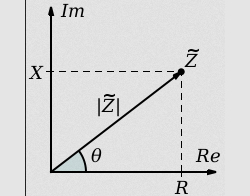
High impedance lines are more adversely affected by the inherent capacitance that is present in the cable itself. This capacitance combines with the impedances of the source and destination to set up a filter.
As the impedance increases and/or the capacitance per foot increases, the active frequency at which the filter comes into play gets lower. The frequencies above this point actually begin to “short out” across the cable’s conductors before they ever get to their intended destination. Keeping impedance low and using quality cables can be important issues for maintaining wide frequency response in long lines.
A high impedance line that is interacting with outside electrical interference will act more like an “antenna” than a low impedance line. This problem can get worse as the cable gets longer. This effect is usually insignificant for a guitar or high-Z microphone plugged into an amp with a 15-foot cord but it can have a big effect if that same signal is sent 100 feet down a snake.
These are reasons why a high impedance signal is almost always converted to low impedance with the use of a direct box (DI) before being sent long distances.
Another reason for the use of a DI is that it takes a two conductor unbalanced line and converts it to a three conductor balanced line. This is a separate issue, not to be confused with impedance.
It is a common misconception that all lines that use regular tip/sleeve 1/4-inch guitar cord type connectors are high impedance. Not so. The output from a guitar that has a battery operated active preamplifier or pickup system will be low impedance in nature. So will the output of an electronic keyboard, guitar preamplifier or guitar effects processor. The signals are unbalanced but LOW impedance in nature.
Low Feeds High
In order to preserve signal level and frequency response, it’s important to drive equipment with a source signal that is lower in impedance than the equipment’s input impedance.
If the input impedance of a device is not significantly higher than the source impedance, the signal will be reduced or “loaded down” and its signal to noise ratio and frequency response will suffer.
Think of this as having a nozzle at the end of a garden hose. The garden hose is a low impedance source (there is little resistance to the flow of water) and the nozzle is the higher impedance of the input being fed by the hose.
When the nozzle valve is closed (open circuit):
—Input impedance is VERY high
—Pressure (voltage) is at maximum
—Flow (current) is zero
Now open the nozzle just a little:
—Input impedance reduces but remains high
—Pressure reduces but remains high
—Flow is small
—You can hear lots of hiss from the spray (high frequencies)
As you continue to open up the nozzle:
—Input impedance reduces further
—Pressure reduces
—Flow increases
—Hiss from spray becomes less noticeable
With the nozzle open all the way:
—Input impedance is very low
—Pressure falls dramatically
—Flow is greatest
—Hiss from spray all but disappears
